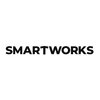Filter interviews by
My Home Constructions Graduate Trainee Interview Questions and Answers
My Home Constructions Graduate Trainee Interview Experiences
1 interview found
I applied via Walk-in and was interviewed before Sep 2022. There were 2 interview rounds.

(3 Questions)
- Q1. What is you qualification
- Q2. What is your projects
- Q3. What is concrete used in pcc
- Ans.
Concrete is used in PCC (Plain Cement Concrete) as a base material for constructing floors, foundations, and pavements.
Concrete in PCC is typically made of cement, sand, and coarse aggregates mixed in a specific ratio.
It is used as a base material for constructing floors, foundations, and pavements in buildings and infrastructure projects.
PCC provides a smooth and level surface for further construction work to be carri...
Interview questions from similar companies

Interview Questionnaire
2 Questions
- Q1. What projects i had done in Bachelors?
- Ans.
I completed various projects during my Bachelor's degree, including a design project for a new bridge and a research project on renewable energy.
Designed a new bridge using CAD software
Researched and implemented renewable energy sources on campus
Collaborated with classmates on a group project to improve campus sustainability
- Q2. Where i did my 6 months internship?
- Ans.
I completed my 6 months internship at ABC Engineering Firm, where I gained hands-on experience in project management and design.
Internship at ABC Engineering Firm
Focused on project management and design
Hands-on experience gained
Interview Preparation Tips
Experience: I was fresher, so they usually ask me about my university projects and my final training.
Tips: It will be good if you relate your projects with the company profile.

I applied via LinkedIn and was interviewed in May 2024. There were 2 interview rounds.
(6 Questions)
- Q1. What is your current job role & responsibility?
- Q2. How to manage site as a project engineer.
- Ans.
A project engineer manages a site by overseeing construction activities, coordinating with stakeholders, ensuring compliance with regulations, and resolving issues.
Coordinate with project managers, contractors, and subcontractors to ensure smooth workflow.
Monitor progress and quality of construction activities to meet project deadlines.
Ensure compliance with safety regulations and quality standards.
Resolve any issues o...
- Q3. How much number of slab to give in one months.
- Ans.
The number of slabs to give in one month depends on the project timeline, size of slabs, and resources available.
Consider the project timeline and deadlines for completion
Evaluate the size and complexity of the slabs to determine production rate
Assess the availability of resources such as manpower and equipment
Example: If the project requires 100 slabs and the production rate is 10 slabs per week, then it would take 10...
- Q4. What is the mivan shuttering.
- Ans.
Mivan shuttering is a type of formwork that is used in construction for constructing walls and slabs.
Mivan shuttering is a fast-paced construction technique.
It involves setting up aluminum formwork to create the structure of walls and slabs.
The formwork is reusable and can be quickly assembled and dismantled.
Mivan shuttering results in smooth finishes on concrete surfaces.
It is commonly used in high-rise buildings and
- Q5. Types of cement grade and which grade used in M70.
- Ans.
Different types of cement grades include OPC, PPC, PSC, etc. M70 grade typically uses OPC cement.
Types of cement grades: OPC, PPC, PSC, etc.
M70 grade usually uses OPC cement.
OPC (Ordinary Portland Cement) is commonly used in high-strength concrete mixes like M70.
- Q6. How much experience you have in high rise building.
(4 Questions)
- Q1. What is your current salary?
- Ans.
I am currently earning a competitive salary based on my experience and qualifications.
My current salary is in line with industry standards.
I am open to discussing salary expectations for this role.
I believe my compensation reflects my skills and contributions to my current employer.
- Q2. How much deduction in PF.
- Ans.
The deduction in PF varies based on the employee's salary and the company's policy.
PF deduction is typically a percentage of the employee's basic salary
The current rate of PF deduction is 12% of the basic salary
Some companies may choose to match the employee's contribution to PF
Employees can also choose to contribute more than the mandatory 12%
- Q3. Your expectation salary breakup.
- Q4. Provide last 3 months salary slips and other documents.
Interview Preparation Tips

Graduate Engineer Interview Questions & Answers
RDC Concrete (India)posted on 21 Jan 2023
I applied via Walk-in and was interviewed in Dec 2022. There were 5 interview rounds.

Total of 25 questions and duration of 30 minutes will be given to us. Topics are verbal, decision makings questions, quant , surface area and Volume.
People are who cleared first round will be called for second round GD and here they will give 10 minutes time for each team. each team consist of 10 to 14 people. topics could be general or situational in the field.
(1 Question)
- Q1. All technical questions about concrete and quite basic questions.
(1 Question)
- Q1. This is the final Round to test your Managerial skills , Here in RDC they look for the people who have ample Leadership qualities rather Technical.
Interview Preparation Tips

(1 Question)
- Q1. Regarding Concrete and Finishing Work
Interview Preparation Tips

I applied via Naukri.com and was interviewed in Apr 2024. There was 1 interview round.
(1 Question)
- Q1. Tell me about yourself

(1 Question)
- Q1. Technical round and related to experience

I applied via Recruitment Consulltant and was interviewed in Mar 2023. There were 2 interview rounds.

(2 Questions)
- Q1. Working experience
- Q2. Present location of work
- Ans.
I am currently working at a construction site in downtown city.
Construction site in downtown city
Working on a high-rise building project
Coordinating with architects, contractors, and workers
Ensuring adherence to safety regulations and project timelines
Interview Preparation Tips

I applied via Company Website and was interviewed before Jan 2023. There was 1 interview round.
(5 Questions)
- Q1. Chiller efficiency
- Ans.
Chiller efficiency is a measure of how well a chiller unit is able to cool a space while using the least amount of energy.
Chiller efficiency is typically measured by the Coefficient of Performance (COP), which is the ratio of cooling output to energy input.
Regular maintenance and cleaning of chiller components can improve efficiency.
Upgrading to a more energy-efficient chiller model can also increase efficiency.
Proper ...
- Q2. Which one more efficiently? Air cooled,or water cooled???
- Ans.
Water cooled systems are generally more efficient than air cooled systems due to higher heat transfer capabilities.
Water has higher heat transfer capabilities compared to air
Water cooled systems can maintain more consistent temperatures
Water cooled systems are typically used in high performance applications such as data centers and industrial machinery
- Q3. How we improved duct velocity?
- Ans.
Duct velocity can be improved by increasing the fan speed or reducing the duct size.
Increase the fan speed to increase the air velocity in the duct.
Reduce the duct size to increase the air velocity.
Use dampers or adjustable louvers to control and optimize the airflow.
Ensure proper sealing of duct joints to minimize air leakage.
Consider using smooth and straight ducts to reduce friction and improve airflow.
Regularly cle...
- Q4. What types of gas use chiller system?
- Ans.
The chiller system uses various types of gases for cooling purposes.
Common types of gases used in chiller systems include R-134a, R-410A, and ammonia.
R-134a is a hydrofluorocarbon (HFC) refrigerant commonly used in air conditioning systems.
R-410A is a blend of hydrofluorocarbons used as a replacement for older refrigerants.
Ammonia (NH3) is often used in industrial chiller systems due to its high cooling capacity.
Other ...
- Q5. How we decided the vrf system capacity as per area??
- Ans.
The VRF system capacity is determined based on the area's cooling and heating load requirements.
Calculate the total cooling load and heating load for the area
Consider factors such as insulation, windows, occupancy, and equipment
Select VRF system capacity based on the calculated load requirements
Consult with HVAC professionals for accurate sizing
Interview Preparation Tips


(1 Question)
- Q1. Total Work experience Previous company Role and responsibility Current CTC
(1 Question)
- Q1. Technical skill DG sefty Transformer Sefty working principles All types breakers sefty SLD from HT line to LT line
Interview Preparation Tips
Be confidence
Do not nervous
My Home Constructions Interview FAQs
Tell us how to improve this page.
My Home Constructions Interviews By Designations
- My Home Constructions Diploma Electrical Engineer Interview Questions
- My Home Constructions Junior Engineer Interview Questions
- My Home Constructions Security Officer Interview Questions
- My Home Constructions Senior Officer Interview Questions
- My Home Constructions MEP Engineer Interview Questions
- My Home Constructions Project Engineer Interview Questions
- My Home Constructions Assistant Manager Interview Questions
- My Home Constructions Graduate Trainee Interview Questions
- Show more
Interview Questions for Popular Designations
- Graduate Engineer Trainee (Get) Interview Questions
- Graduate Engineer Interview Questions
- Production Graduate Engineer Trainee Interview Questions
- Graduate Apprentice Trainee Interview Questions
- Graduate Apprenticeship Trainee Interview Questions
- Graduate Student Interview Questions
- Graduate Apprentice Interview Questions
- Post Graduate Engineer Trainee [pget] Interview Questions
- Show more
My Home Constructions Graduate Trainee Interview Process
based on 1 interview
Interview experience
Interview Questions from Similar Companies
|
Senior Engineer
81
salaries
| ₹4.2 L/yr - ₹9 L/yr |
|
Junior Engineer
78
salaries
| ₹2.4 L/yr - ₹4.5 L/yr |
|
Engineer
64
salaries
| ₹3.6 L/yr - ₹6.2 L/yr |
|
Assistant Manager
48
salaries
| ₹5.2 L/yr - ₹12 L/yr |
|
Civil Engineer
35
salaries
| ₹2.9 L/yr - ₹7 L/yr |

Knight Frank

M3M India

R.S. Infraprojects

SMEC
- Home >
- Interviews >
- My Home Constructions Interview Questions >
- My Home Constructions Graduate Trainee Interview Questions


















